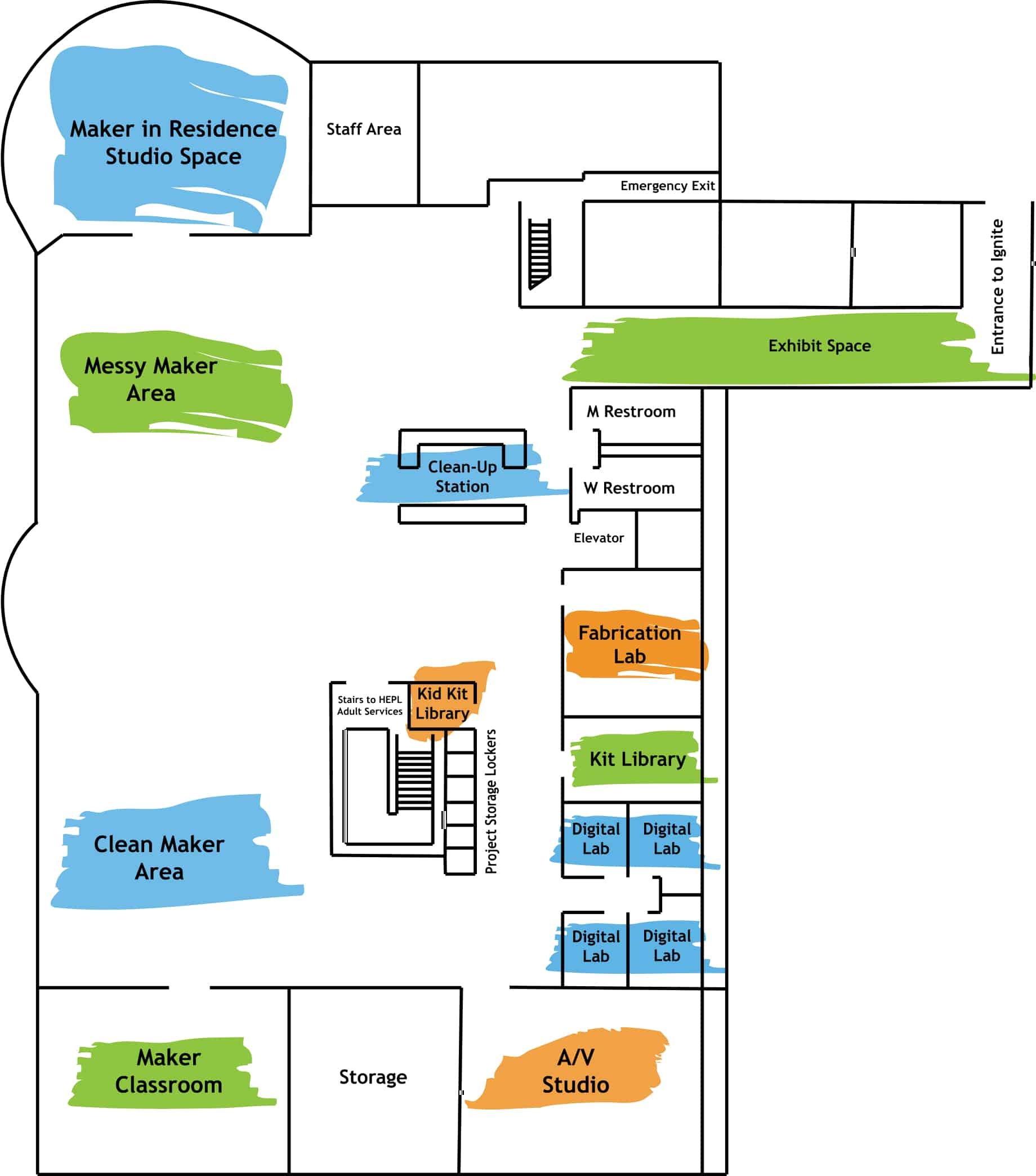By Sydney Brink
Public art is all around us! Hamilton County has interactive maps of all the public art in different towns of the county – try organizing a walking tour in one area to get a taste for the local art! HEPL and Ignite Studio are also getting a place on that map soon, which you can learn more about here. Some public art you see might make you wonder, “How did they do that?” Learning the processes behind art you interact with everyday will help you appreciate the time, energy, love and craftmanship that artists put into art to make their community a better place. Bronze has been a popular media for making sculptures for many years. Some very famous public art has been made from lost wax casting (also known as investment casting), which is as old as Mesopotamia and the Bronze Age in the Mediterranean. Read on to all about lost wax casting!
All About Lost Wax Casting
First, the artist makes a sculpture made of wax (or other materials that would be safe if burned, like wood or natural fabrics). The sculpture is attached to a wax base with a wide opening. For smaller sculptures, this base is sometimes made from pouring wax into a plastic cup and cutting that cup away when the wax cools. This base becomes the bottom of the wax “tree” the artist builds at the top of the mold at later stages of the process. Using thinner lines of wax, called sprues, the artist will connect the high and low points of the sculpture to the thickest part of the tree.
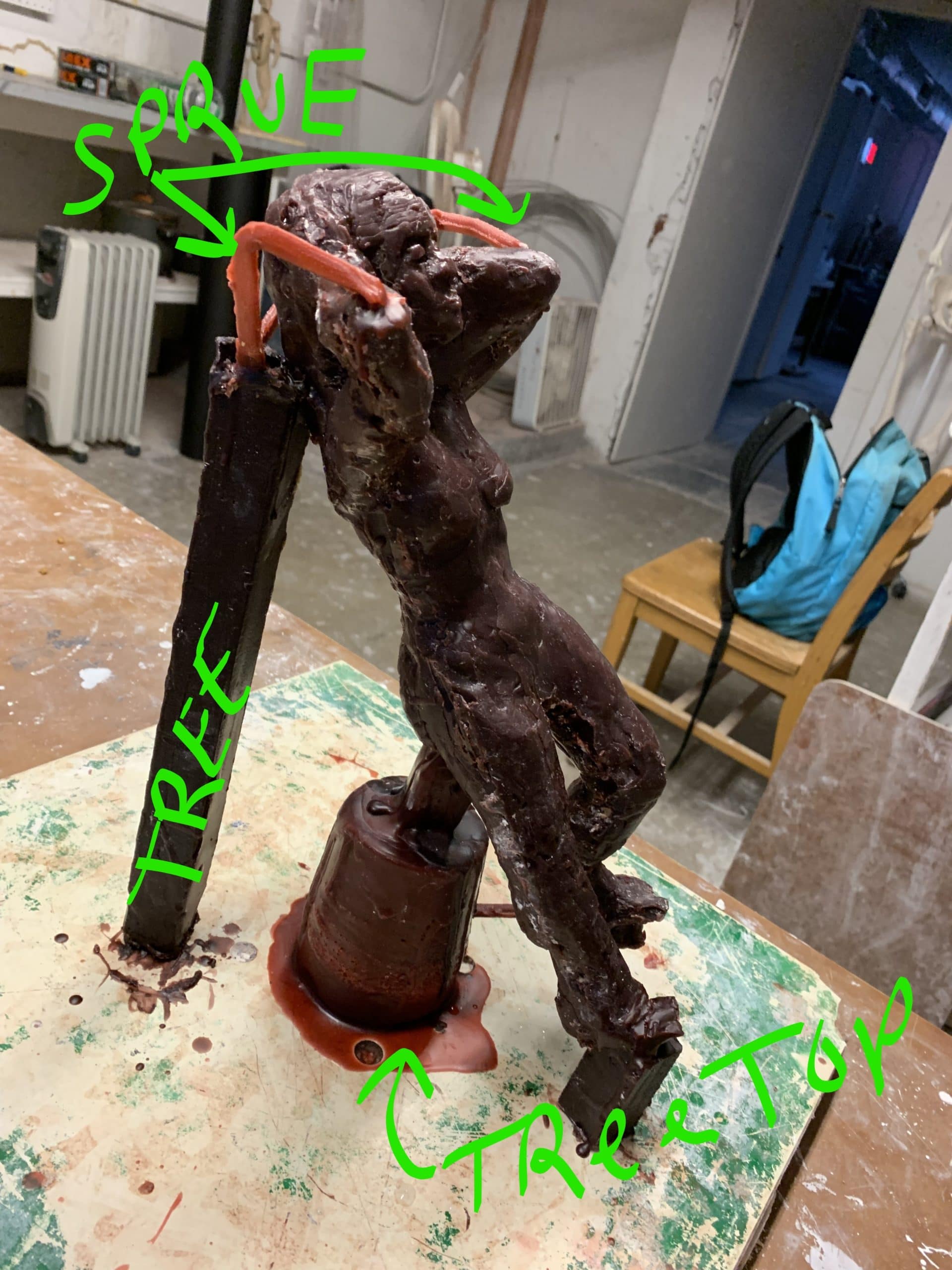
The artist will have to make sure there are enough sprues attached to ensure that all high and low points of the sculpture will fill up with molten metal after the wax is burnt out of the mold later on. The artist then will have to make a cage to hold the investment plaster that goes around the wax tree.
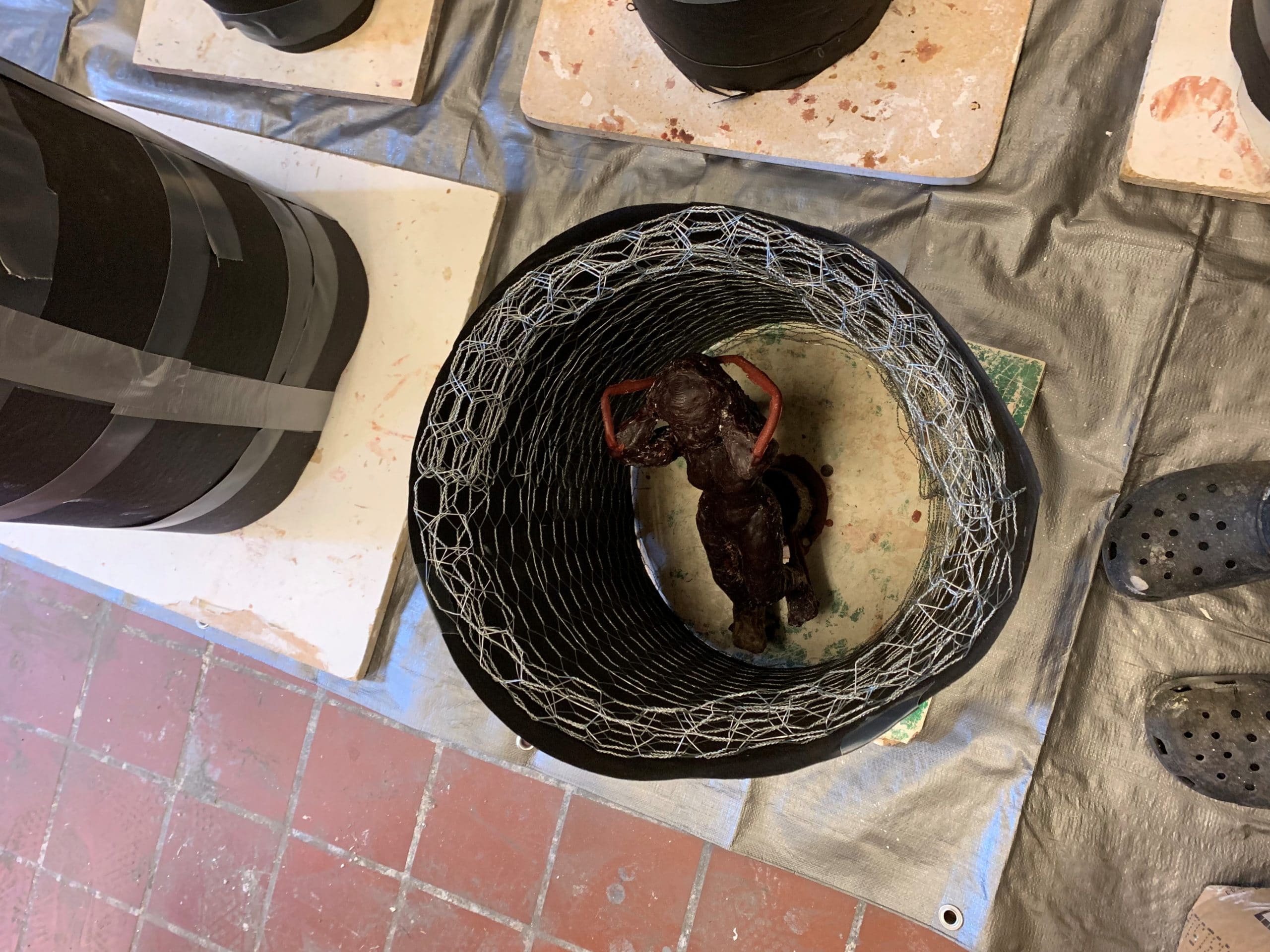
This investment mold is made of chicken wire, duct tape and tar paper.
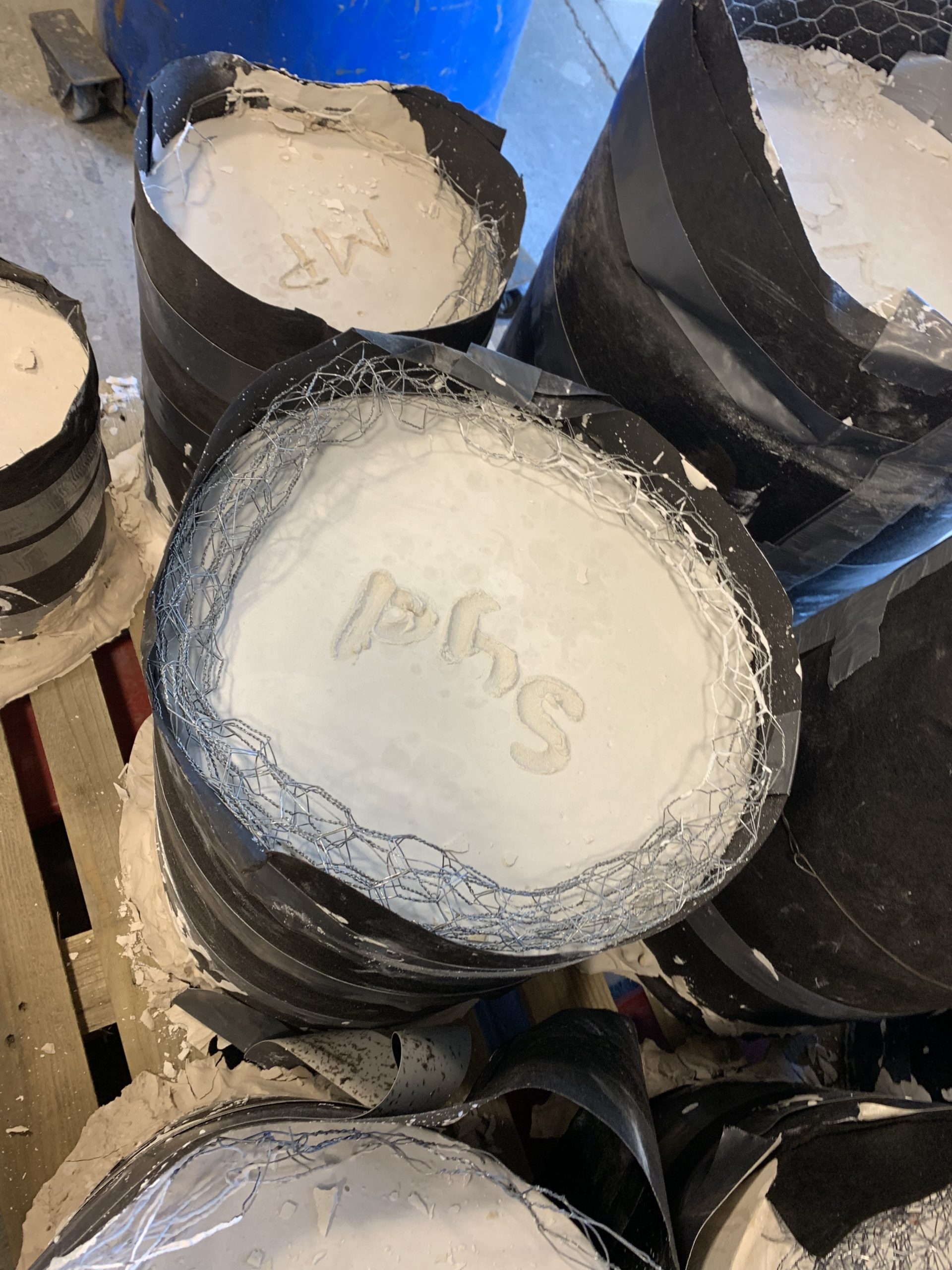
And then investment plaster is poured over top the wax to fill the whole cylinder and cover the wax tree well.
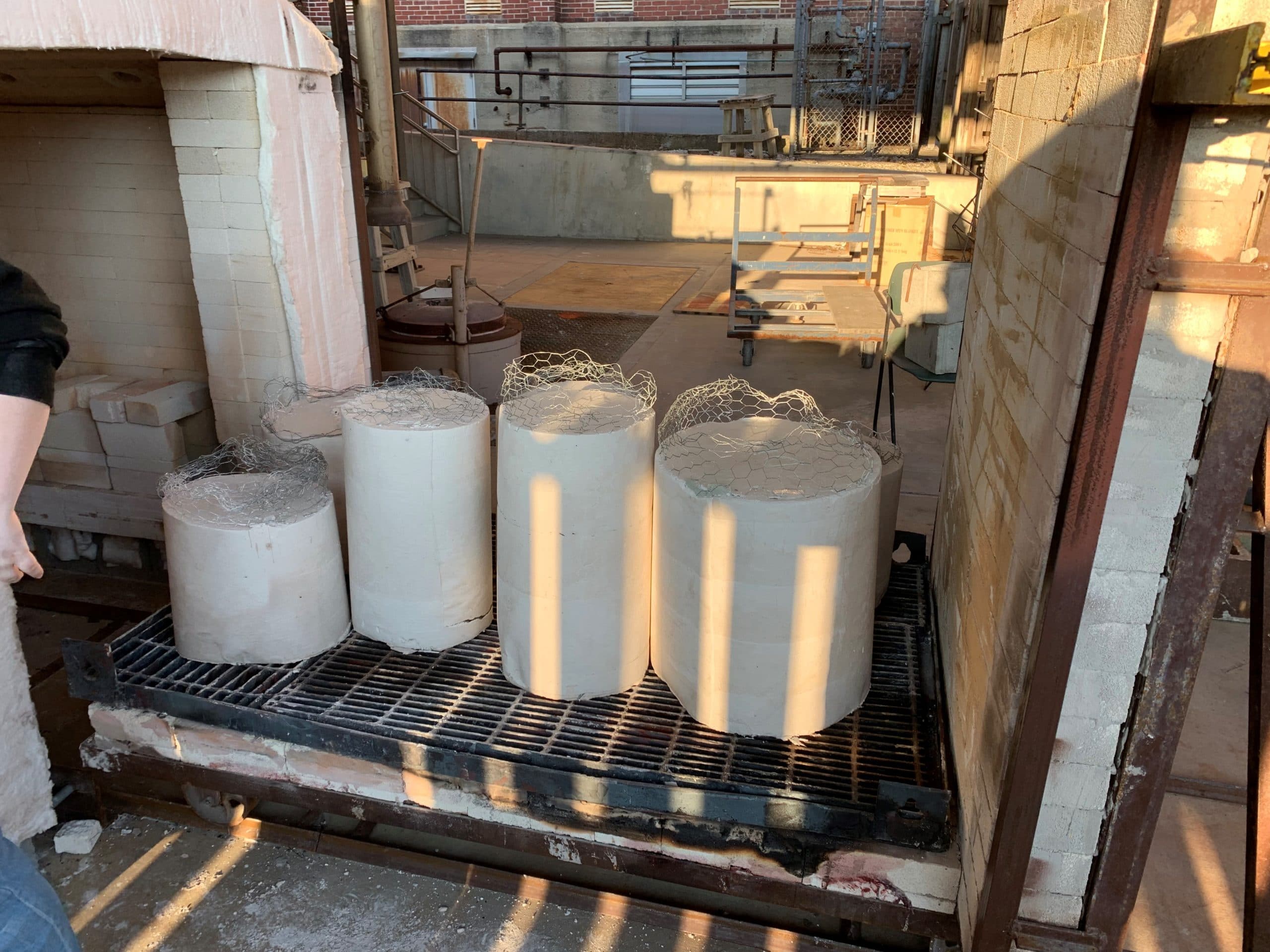
After the plaster has cured, the tar paper comes off and the plaster molds get put into a kiln for many days at a temperature that removes both the wax tree inside and any excess moisture in the plaster. The wax inside the plaster melts and drips out of the mold at this time, leaving empty channels and pockets where the wax tree was.
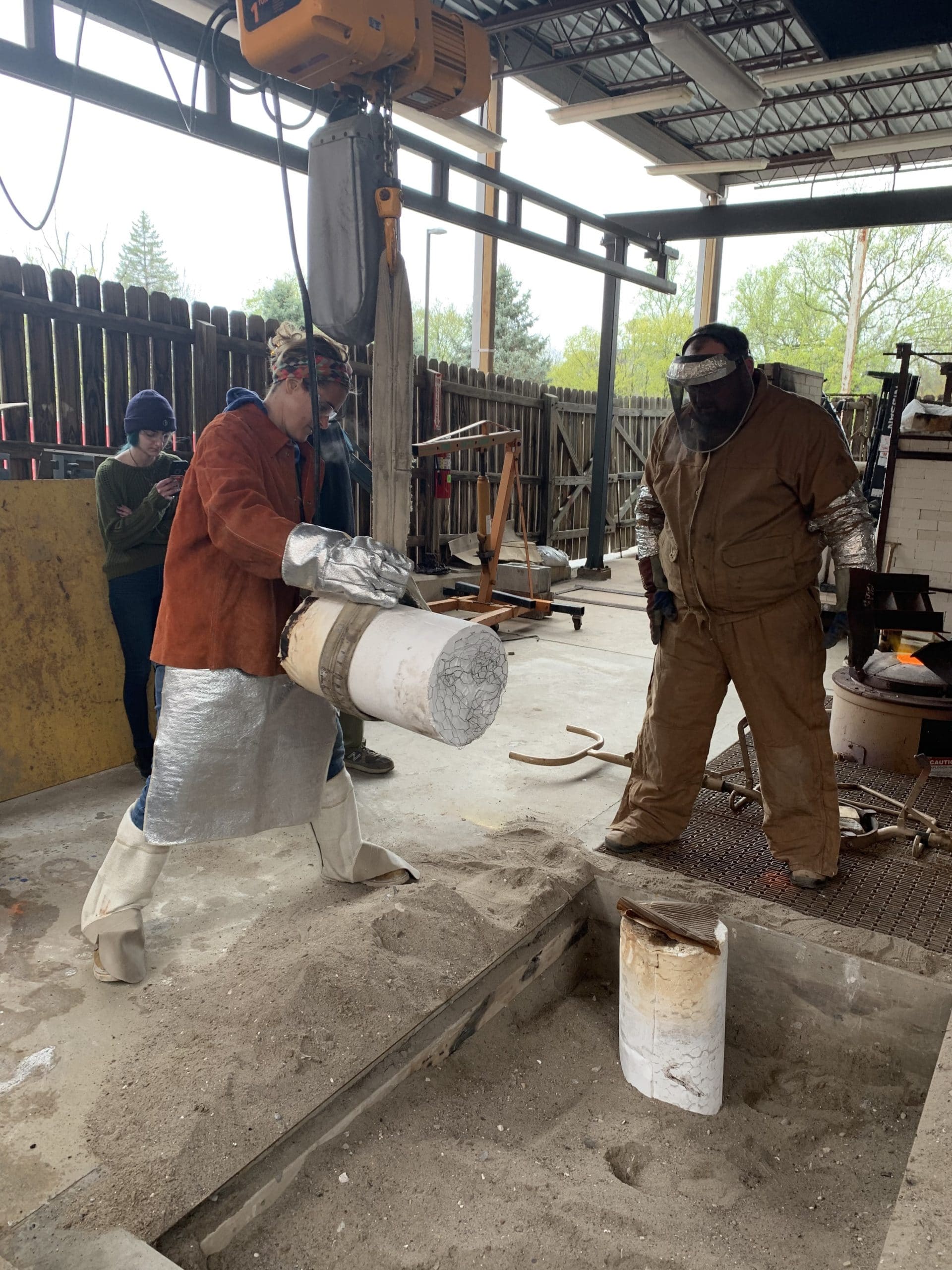
When the molds are ready to be pulled out, they’re lifted with a crane and many layers of heat-protective equipment to a sandpit for safe handling.
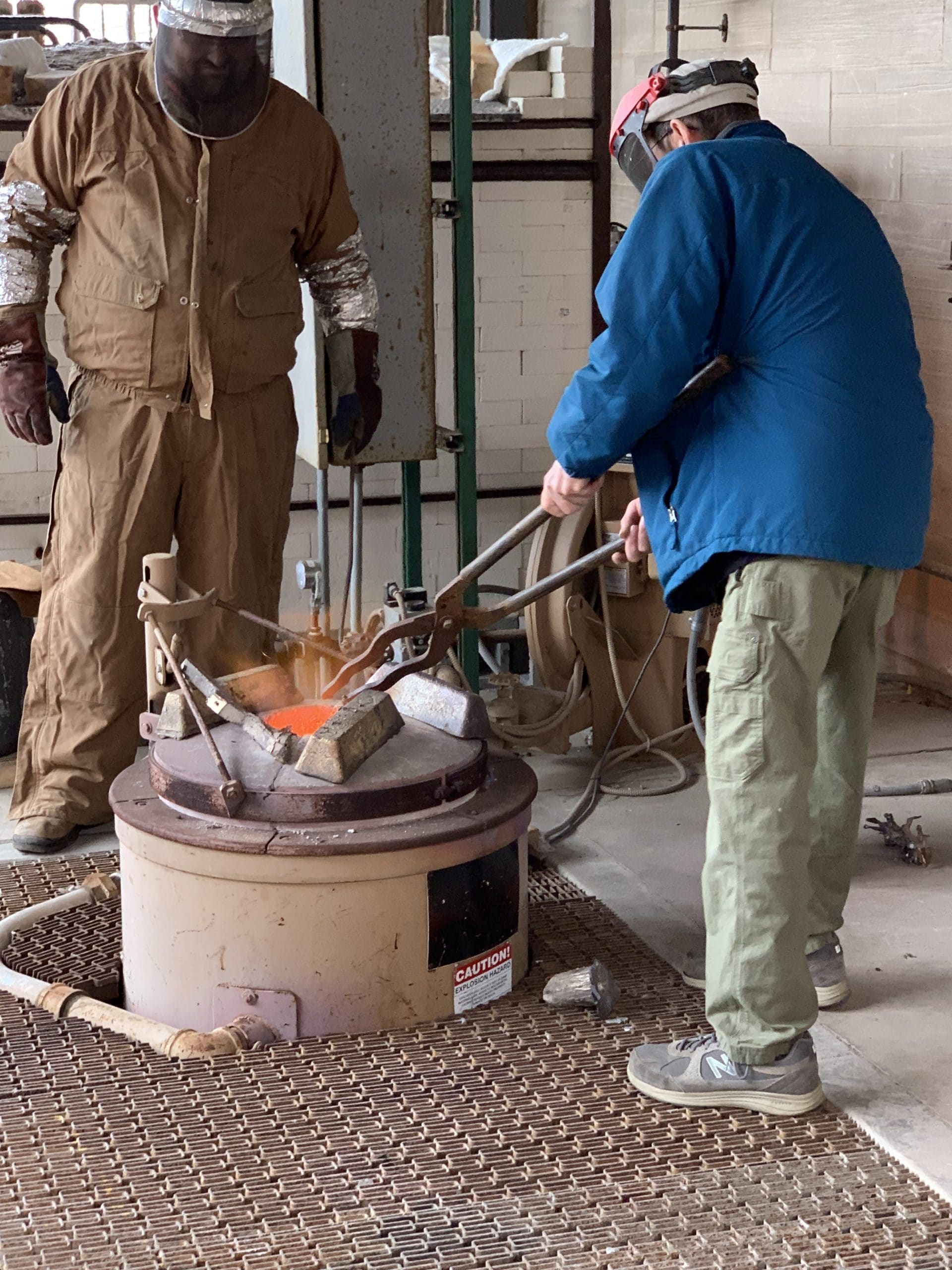
And metal bars (here they are using bronze, but this process is also used for aluminum, iron and other metals) are melted down in a furnace. The bowl inside the furnace that holds the melting bronze is called the “crucible”.
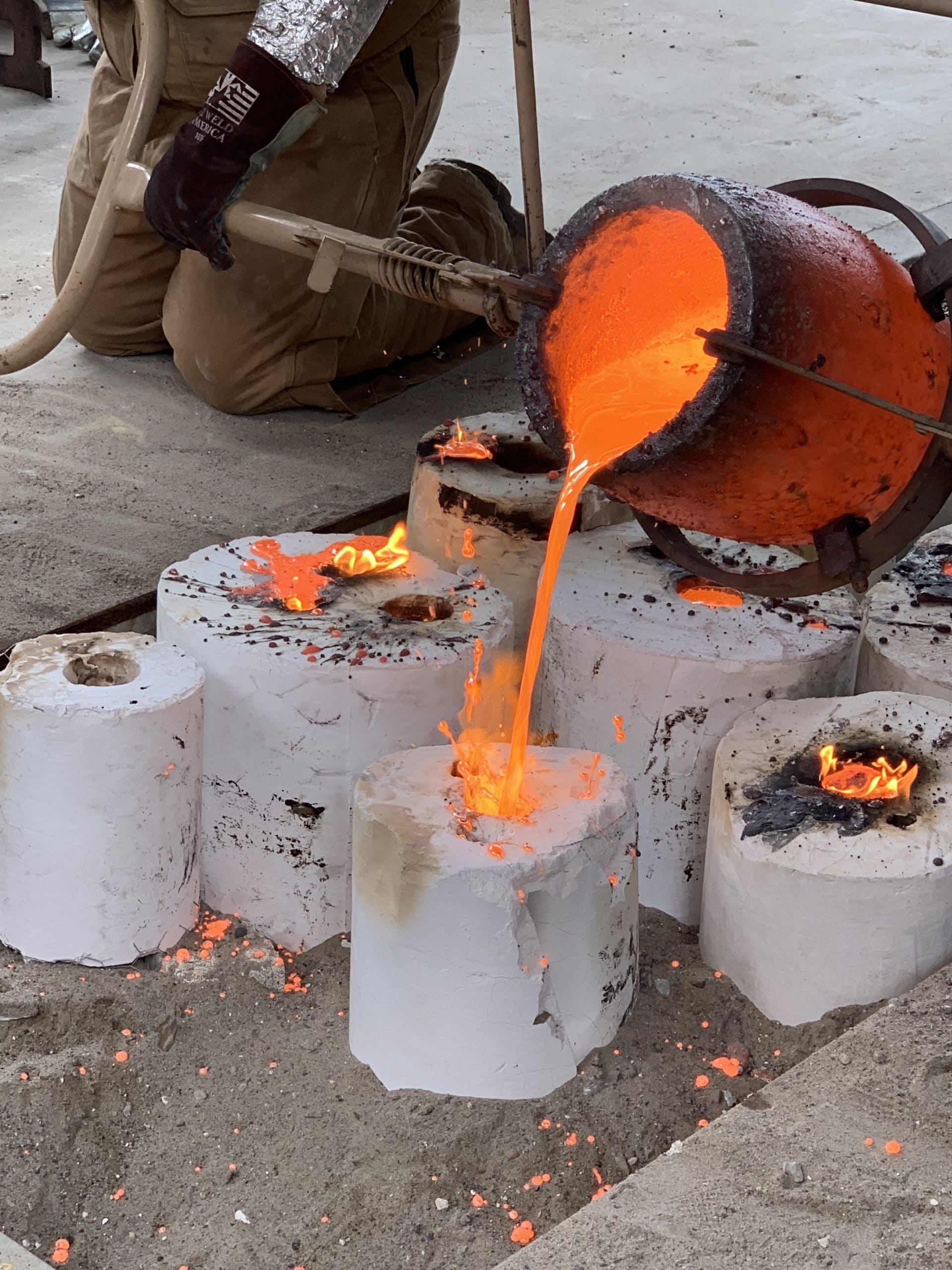
And the molten metal is poured from the crucible and into the empty molds. The metal will fill up all the empty channels left from the wax tree!
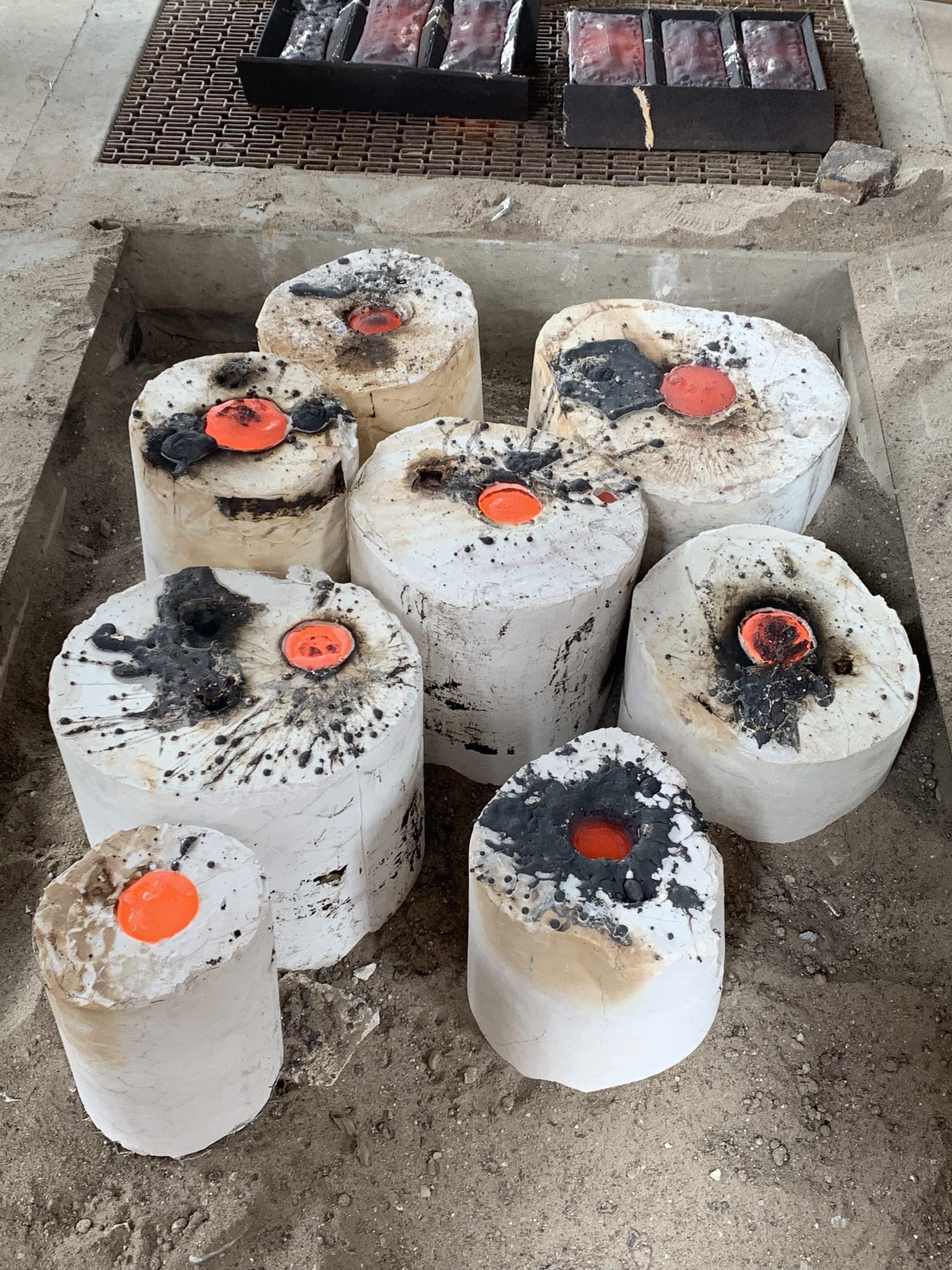
You can see the molten bronze sitting inside the plaster molds as they cool down here. These large openings, where the bronze was poured in, are where the “base” of the wax tree were.

And the leftover bronze is cast into bars for future use!
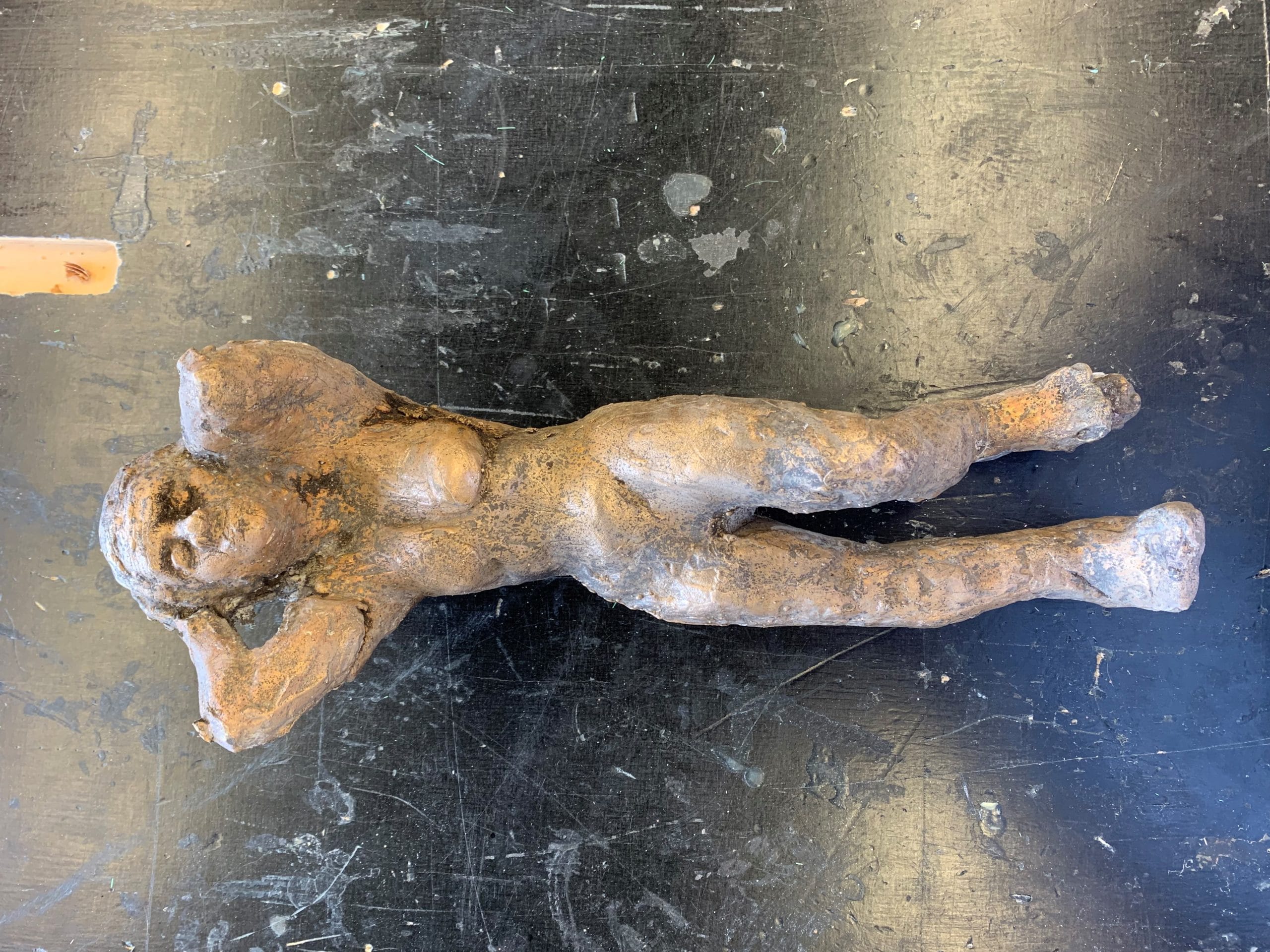
After the bronze has cooled, the artist will break open the plaster investment molds and retrieve their sculpture. The sculpture will still be attached to all of it’s supporting trees and sprues, so casting the metal is only half the work! This is what the bronze sculpture looked like after it was cut from the tree, but before polishing and touching up.
If you’re interested in learning more about foundries, consider taking a trip to southern Indiana to visit Sculpture Trails, an outdoor sculpture museum in Solsberry, IN. They even have live demos of iron or aluminum pours on certain nights!

